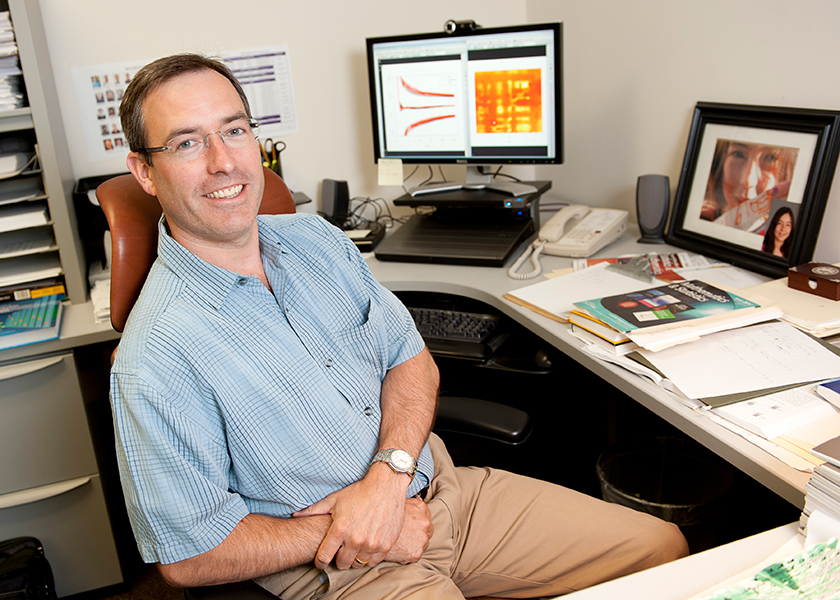Of Strokes and Misdiagnosis
Professor Dan Apley aims to help hospitals improve stroke diagnosis in emergency rooms

Two years ago, Northwestern Engineering’s Dan Apley knew little about strokes.
Apley, professor of industrial engineering and management sciences, understood the basics, of course. He knew strokes occurred when blood flow to the brain was interrupted, which might cause an individual to struggle walking or talking. Beyond that, though, Apley never fashioned himself an informed source on a medical event befalling nearly 800,000 Americans each year.
Talk to Apley about strokes today, however, and he can rattle off key symptoms and engage in a nuanced discussion of the challenges of diagnosis. The shift results from Apley’s ongoing work with Northwestern University’s Feinberg School of Medicine and the University of Chicago Medicine to reduce the potentially damaging misdiagnoses of strokes.
“You want to do something useful and have a positive benefit on people, and this work brings that,” Apley said.
Seeking improvement in stroke diagnoses
In the nation’s emergency rooms, strokes are regularly misdiagnosed – about one in 10 cases, according to various published reports over the last decade. In many cases, the patient’s mild, non-specific symptoms, such as a headache, vertigo, or inability to answer questions correctly, prompt a different diagnosis. In others, conditions mimicking the symptoms of a stroke, such as slurred speech or numbness of the face, arm, or leg, are mischaracterized. Whatever the reason, such misdiagnoses can have severe health consequences for patients.
Seeking to better understand the factors most frequently contributing to stroke misdiagnoses and eager to craft improved emergency room protocols, officials at Feinberg reached out to Apley, an expert in statistical modeling and machine learning, for assistance.

Apley poured himself into the project, diving into a deep examination of stroke misdiagnoses in the ER as well as learning about the symptoms and conditions of stroke victims when they first encounter medical personnel.
“I’m an engineer at heart and enjoy learning about different problems and trying to figure out solutions,” Apley said.
Developing a solution with real-world implications
Using domain knowledge and a vast pool of observational data logged into the hospital’s electronic medical records system and other databases, stroke experts at Feinberg and UChicago first identified a list of nearly 15 key risk factors contributing to misdiagnoses.
With those risk factors in hand, Apley and his Feinberg colleagues created a simulation experiment in which actors played patients and presented stroke-related symptoms according to scripts. Using experimental design techniques, Apley created combinations of factors for each patient that the stroke experts then penned into the scripts.
“The goal was to present the most informative collection of symptoms during the simulation,” Apley said.
“A stroke expert had established the ground truth, and if you know the ground truth, then you know if an individual doctor’s diagnosis was correct or not,” Apley said. Thereafter, doctors interacted with the patient-actors and give their diagnosis of whether a stroke had occurred or not.
The still-ongoing study will feature about 150 simulations in total, Apley said, and the high-quality data from this controlled study – as opposed to low-quality observational data – will allow him to identify which factors contribute the most to false negatives or positives. He will then fit statistical models to the data to quantify the importance of each factor in misdiagnosis.
“The end goal is to use this to design better protocols for diagnosis of stroke victims in the emergency room, which should translate into improved patient care and outcomes,” Apley said. “Working on an interdisciplinary project that included learning about an important healthcare problem and developing approaches that could impact others for the better is rewarding.”